20 Smart & Tasty Rice Alternatives for a Diabetes-Friendly Diet

In the quest for healthier meal options, especially for those mindful of their blood sugar levels, rice alternatives offer a delightful and nutritious solution. These substitutes not only bring variety to your plate but also offer lower glycemic index values, ensuring slower digestion and more stable blood sugar levels. Whether you’re looking for something with a similar texture to rice or something entirely different, this guide unveils 20 smart and tasty alternatives that don’t compromise on flavor or satisfaction. Dive in to discover new grains, seeds, and even vegetables that can transform your meals.
1. Cauliflower Rice

Cauliflower rice is a versatile, low-carb alternative to traditional rice. Its mild flavor makes it a perfect base for a variety of dishes, from stir-fries to curries. Simply grate fresh cauliflower or pulse it in a food processor until it resembles rice grains. This vegetable powerhouse is rich in vitamins C and K, contributing to overall health. Additionally, its fiber content aids digestion and helps maintain steady blood sugar levels. Consider sautéing it with garlic and herbs for a flavorful twist. A quick tip: Blanch it lightly to preserve its crunchy texture while cooking.
2. Zucchini Noodles
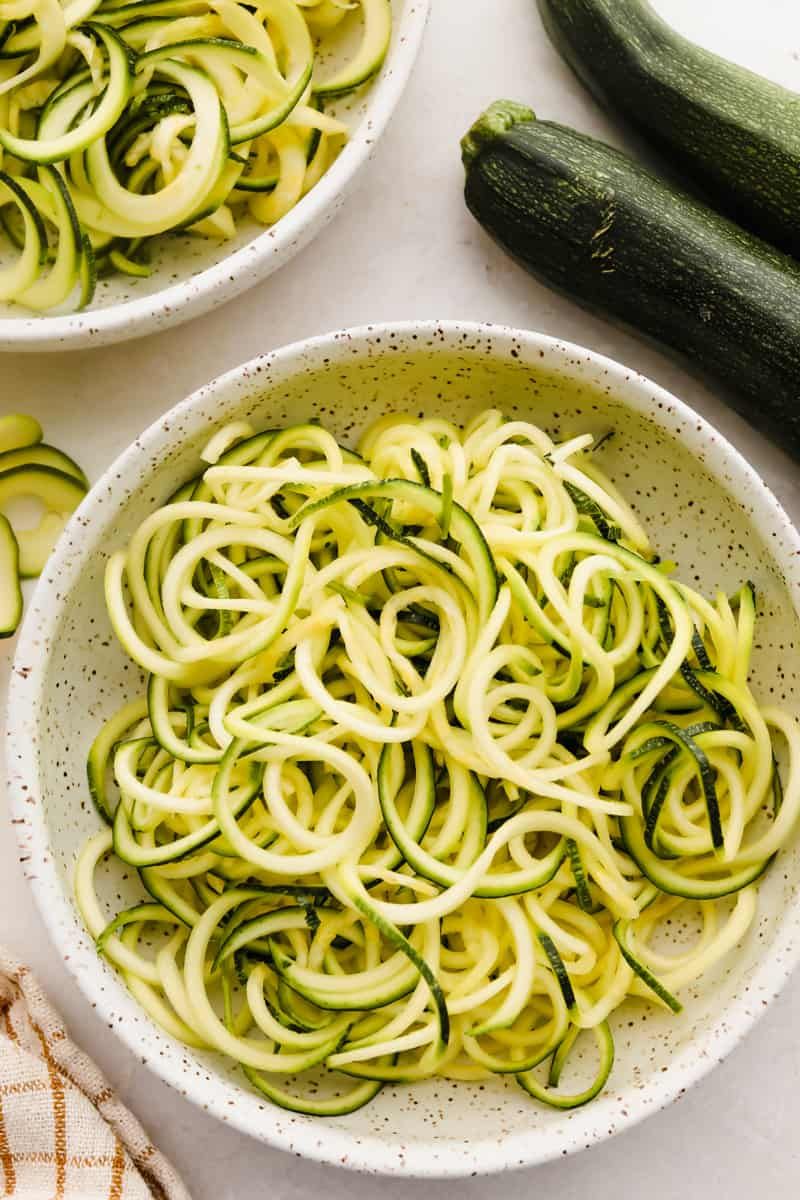
Zucchini noodles, or zoodles, offer a light and fresh alternative to heavy starches. Their subtle taste and firm texture make them an ideal base for sauces and toppings typical of Italian cuisine. Rich in water and fiber, zucchini noodles contribute to satiety and hydration, crucial for diabetics managing their diet. Pair them with a homemade tomato sauce or pesto for a delicious meal. To prepare, simply spiralize fresh zucchini and quickly sauté with olive oil. A sprinkle of parmesan elevates their flavor without adding significant carbs.
3. Barley

Barley is a hearty grain with a chewy texture and nutty flavor, perfect for soups and stews. It’s rich in beta-glucans, a type of fiber known for its role in lowering cholesterol and aiding blood sugar control. This ancient grain is not just filling but also provides a wide array of vitamins and minerals. Try using barley as a base for your grain bowls, mixing in seasonal vegetables and proteins for a balanced meal. Did you know barley was a staple for Roman gladiators? Fuel your body like these ancient warriors!
4. Lentils
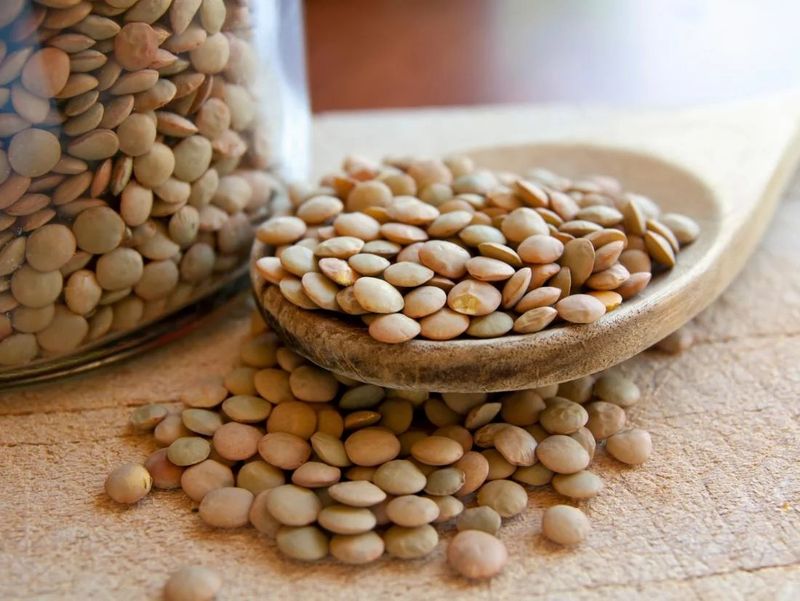
Lentils are a staple in many cuisines, known for their earthy flavor and nutritional benefits. They’re packed with protein and fiber, making them a satisfying and diabetes-friendly option. Their low glycemic index means they digest slowly, preventing spikes in blood sugar levels. Lentils can be used in soups, stews, or as a salad topping for added texture and nutrition. For a cozy meal, try a spiced lentil stew with cumin and coriander. This hearty legume is perfect for vegetarian and meat-based dishes alike.
5. Chickpeas
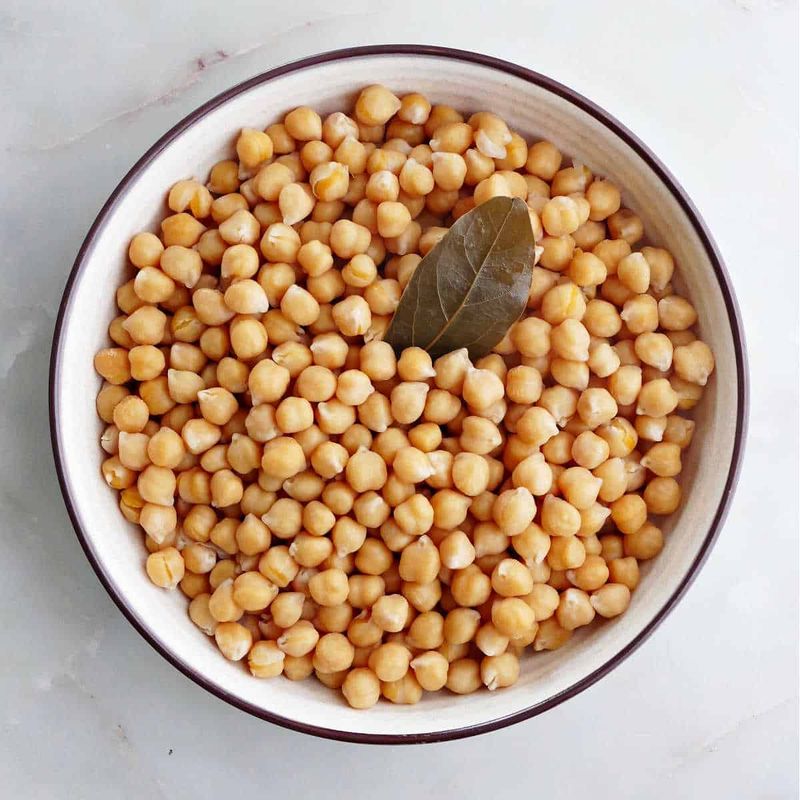
Chickpeas, or garbanzo beans, are a versatile legume that can be used in various dishes from hummus to curries. Their nutty flavor and creamy texture make them a favorite carbohydrate alternative. Rich in protein and fiber, chickpeas help maintain fullness and stabilize blood sugar. Try roasting them with spices for a crunchy snack or adding them to salads for a protein boost. A simple way to enjoy chickpeas is to blend them into a smooth hummus, perfect for dipping or spreading on whole-grain bread.
6. Farro
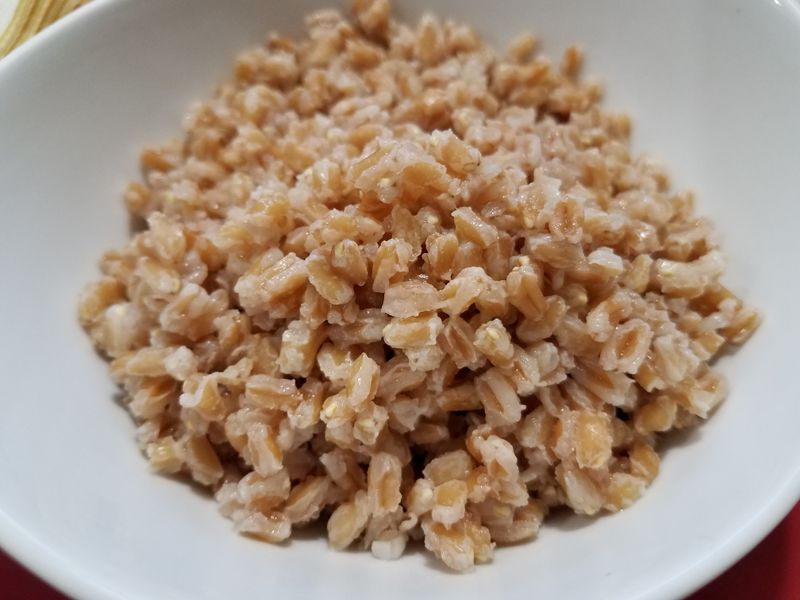
Farro, an ancient grain, offers a chewy texture and nutty taste, making it an excellent replacement for rice in salads and side dishes. Its high fiber content supports digestion and blood sugar control. This grain is packed with nutrients, including magnesium and iron, essential for energy production and overall wellness. Farro can be cooked similarly to rice and pairs well with roasted vegetables and herbs. For a comforting meal, try farro with sautéed mushrooms and fresh thyme, delivering a rich and satisfying flavor profile.
7. Millet
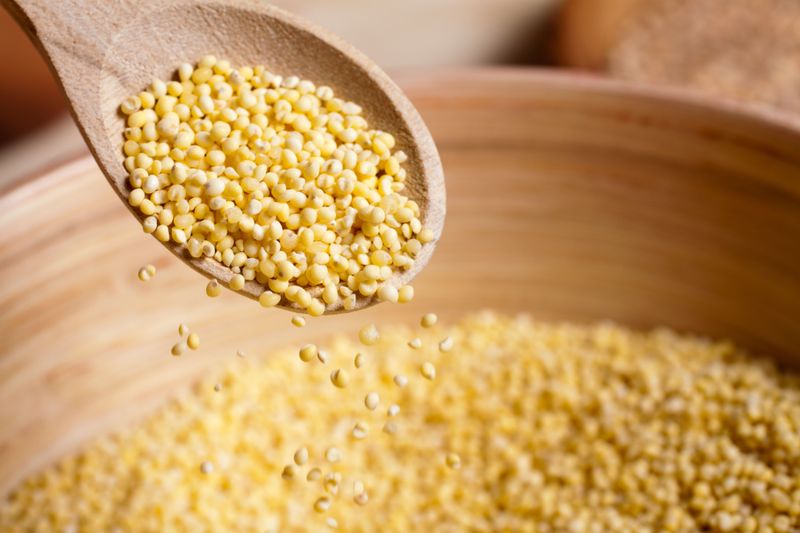
Millet is a gluten-free grain known for its mild flavor and versatility. It cooks quickly and can be used as a base for both savory and sweet dishes. Rich in magnesium, millet supports heart health and helps regulate blood pressure. Its high fiber content also aids in maintaining stable blood sugar levels, making it a smart choice for diabetics. Try serving millet as a breakfast porridge with nuts and berries or as a savory side with herbs and vegetables. Its adaptability makes it a valuable addition to any pantry.
8. Bulgur
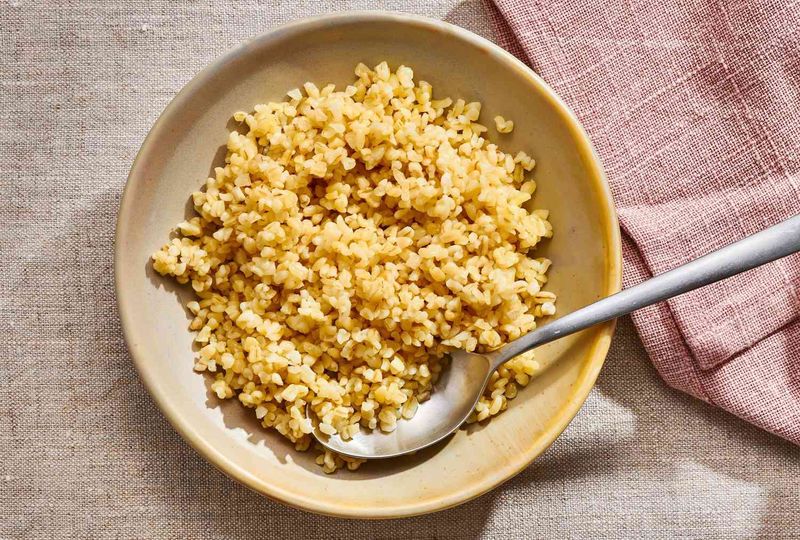
Bulgur is a quick-cooking whole grain made from cracked wheat, offering a slightly nutty flavor and chewy texture. It’s a staple in Middle Eastern cuisine, commonly used in dishes like tabbouleh. With a low glycemic index, bulgur helps manage blood sugar levels, making it suitable for a diabetes-conscious diet. It’s rich in fiber and nutrients, providing a satisfying meal base. For a refreshing salad, mix bulgur with fresh herbs, tomatoes, and lemon juice. Its quick cooking time and adaptability make it a kitchen favorite.
9. Buckwheat
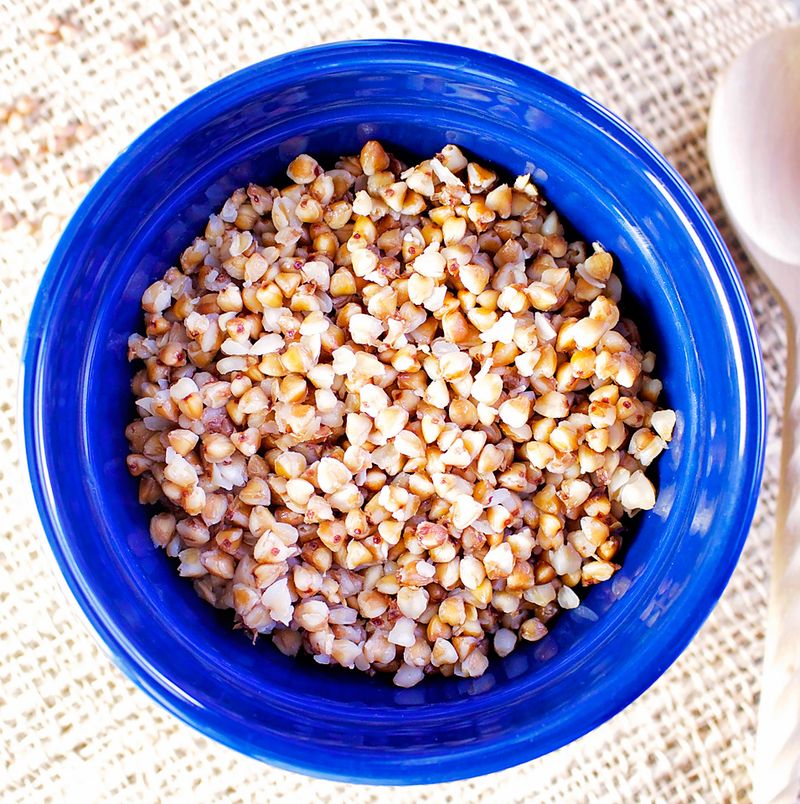
Despite its name, buckwheat is a gluten-free seed related to rhubarb. It’s known for its hearty texture and earthy flavor, ideal for pilafs and salads. Buckwheat is rich in antioxidants and fiber, promoting heart health and blood sugar stability. It’s also high in protein, offering a satisfying and nutritious alternative to traditional grains. Consider cooking buckwheat with sautéed vegetables and a sprinkle of feta for a complete meal. Its robust flavor pairs well with a variety of ingredients, making it both versatile and delicious.
10. Shirataki Rice
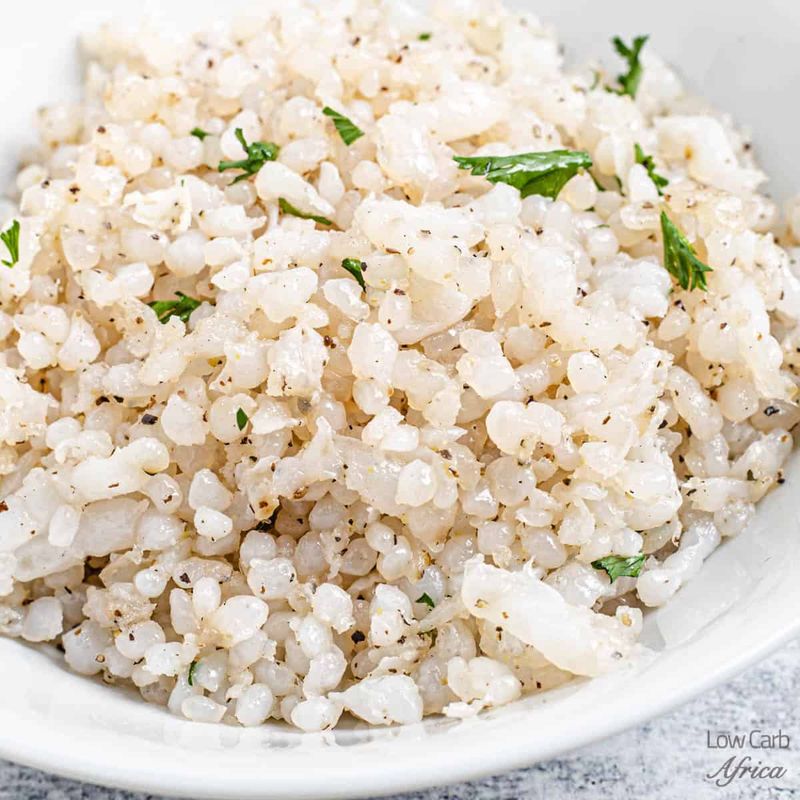
Shirataki rice, made from konjac yam, is a low-calorie, low-carb alternative to traditional rice. Its jelly-like texture absorbs flavors well, making it a perfect base for stir-fries and Asian-inspired dishes. Rich in glucomannan, a soluble fiber, shirataki rice aids in digestion and helps maintain stable blood sugar levels. It’s particularly popular among those following low-carb or keto diets. For a quick meal, toss shirataki rice with sesame oil, soy sauce, and vegetables. Its unique texture and health benefits make it a standout choice.
11. Amaranth
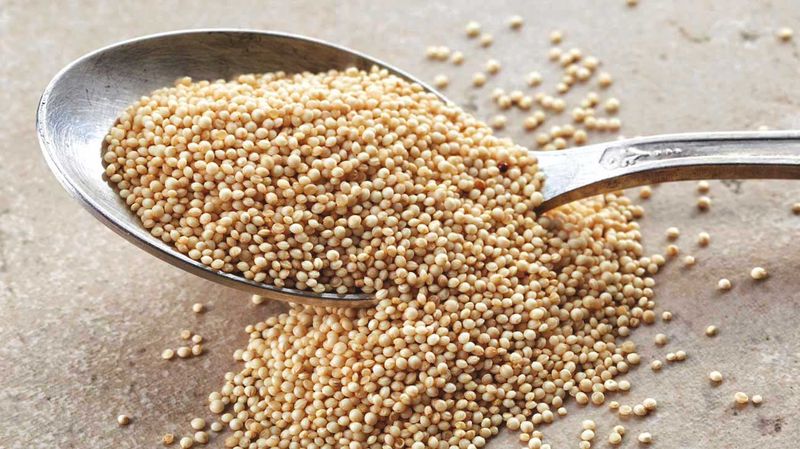
Amaranth is a nutrient-dense grain with a slightly sweet flavor, perfect for porridge or as a side dish. It’s high in protein and contains anti-inflammatory compounds, beneficial for overall health. This ancient grain is gluten-free, making it accessible for those with dietary restrictions. Its high fiber content also supports digestion and blood sugar management. Try pairing amaranth with roasted vegetables or adding it to soups for added texture and nutrition. Its versatility and health benefits make it a great addition to a balanced diet.
12. Chia Seeds
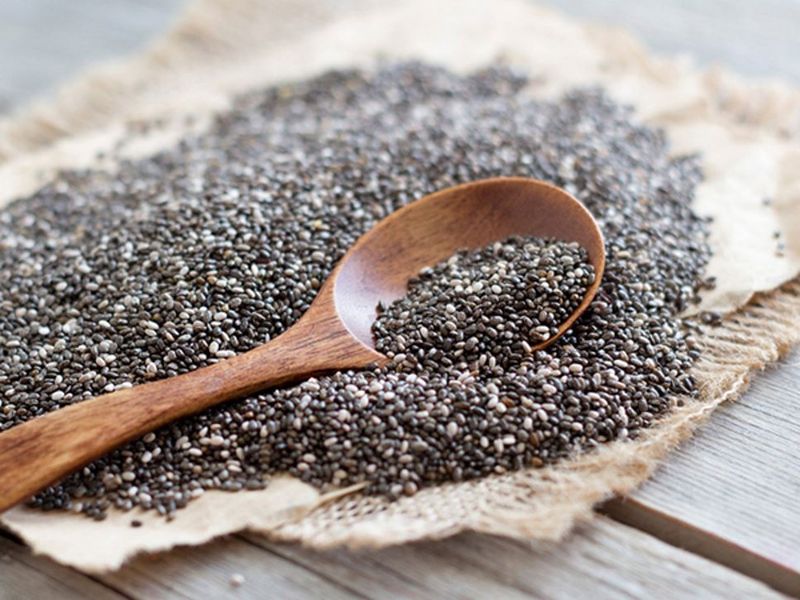
Chia seeds are tiny but mighty, offering immense nutritional benefits. When soaked, they expand into a gel-like consistency, perfect for puddings and smoothies. Rich in fiber and omega-3 fatty acids, chia seeds support heart health and help stabilize blood sugar levels. They’re incredibly versatile, enhancing both sweet and savory dishes. For a nutritious breakfast, try chia pudding with fresh fruit and nuts. Their ability to absorb flavors makes chia seeds a valuable ingredient in creative cooking.
13. Freekeh
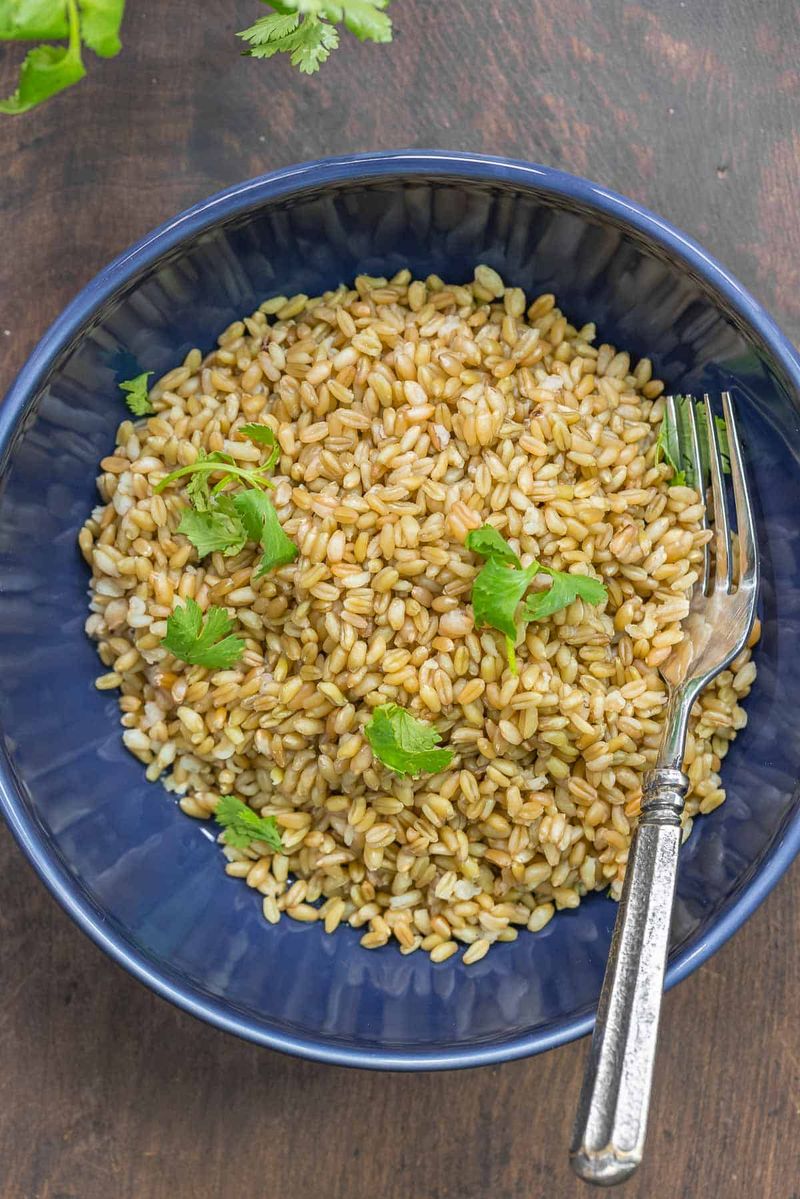
Freekeh is an ancient grain made from young, green wheat that’s roasted and cracked. Its smoky flavor and chewy texture make it a delicious base for salads and pilafs. High in fiber and protein, freekeh promotes fullness and supports healthy blood sugar levels. It’s a great choice for those seeking a nutritious and flavorful rice alternative. Try making a freekeh pilaf with roasted vegetables and fresh herbs. Its unique flavor profile adds depth and character to any meal.
14. Kamut
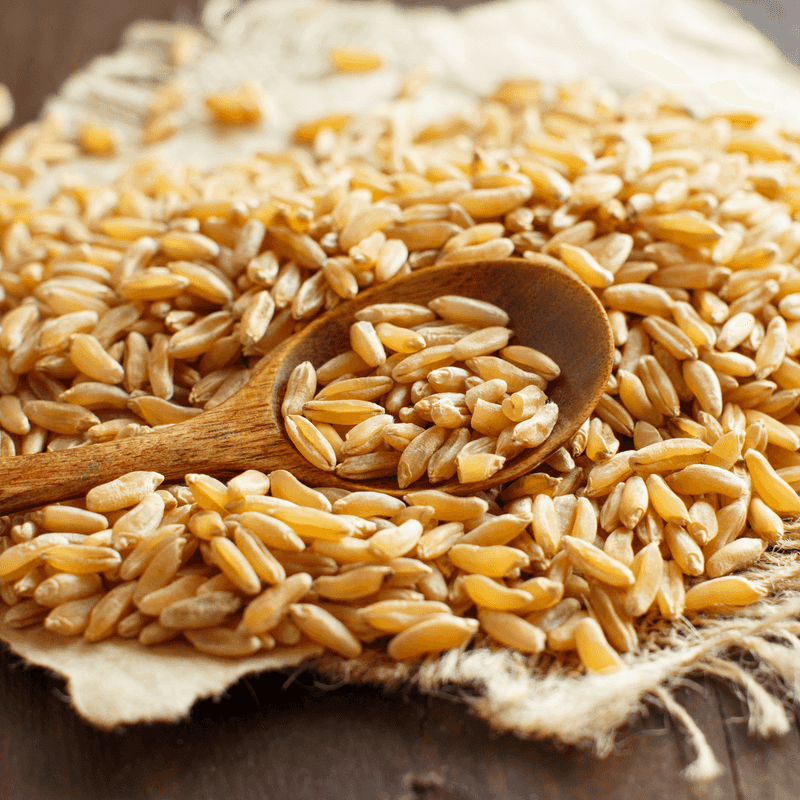
Kamut, a type of ancient wheat, is known for its large grains and nutty flavor. It’s rich in protein and essential nutrients, supporting energy levels and overall health. This hearty grain provides a satisfying chew, making it ideal for salads and grain bowls. Its natural sweetness pairs well with savory and sweet ingredients alike. Consider a kamut salad with fresh arugula, cherry tomatoes, and a lemon vinaigrette. Its robust nature and nutritional benefits make it a valuable addition to a diabetes-friendly diet.
15. Spaghetti Squash
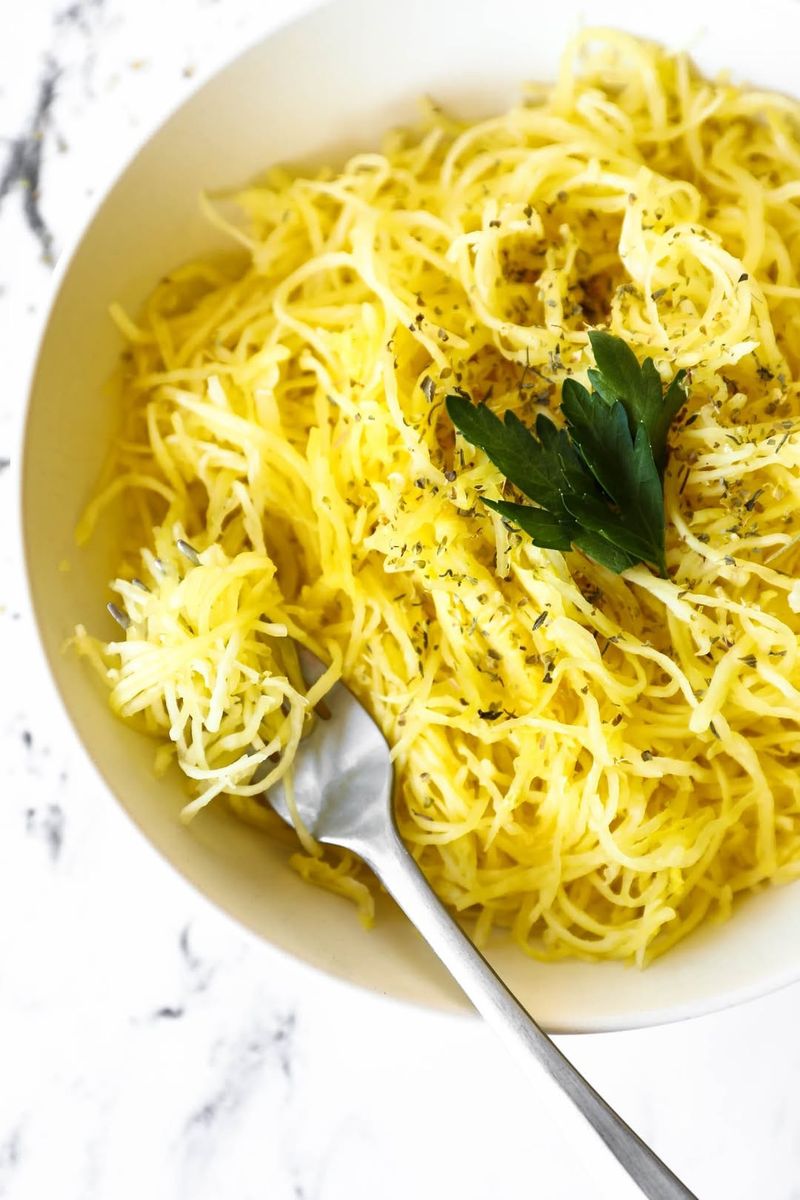
Spaghetti squash transforms into delicate, noodle-like strands when cooked, offering a low-carb alternative to pasta. Its mild flavor and tender texture make it a versatile base for sauces. Low in calories and high in vitamins A and C, spaghetti squash supports immune health and vision. It’s also a good source of fiber, aiding digestion and blood sugar control. Bake it and pair with your favorite sauce for a wholesome meal. Its unique transformation from squash to strands makes it both fun and functional.
16. Teff
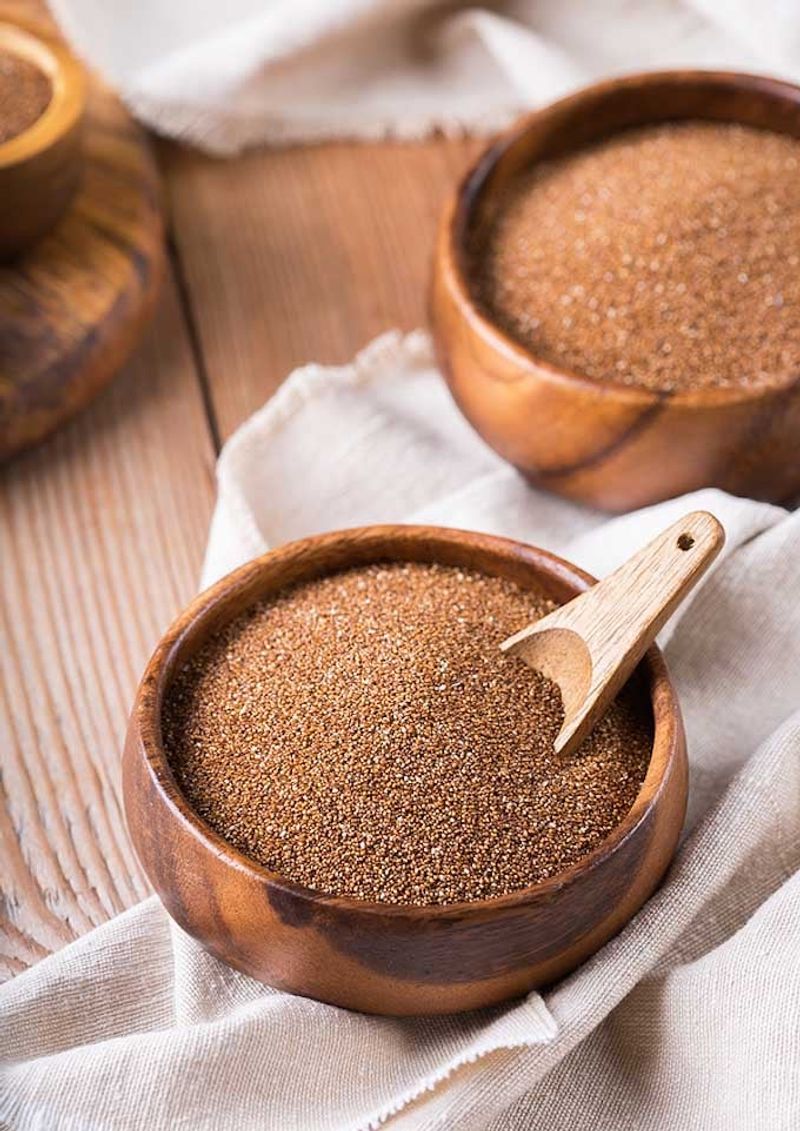
Teff is a tiny grain with a mild, nutty flavor, traditionally used in Ethiopian cuisine. It’s rich in iron and calcium, supporting bone health and energy levels. This whole grain is gluten-free and high in resistant starch, beneficial for maintaining stable blood sugar levels. Teff can be used in porridges, breads, and even as a thickener for soups and stews. Enjoy teff as a warm porridge with cinnamon and fresh fruit for a nourishing breakfast. Its nutritional profile and versatility make it a smart choice for a balanced diet.
17. Polenta
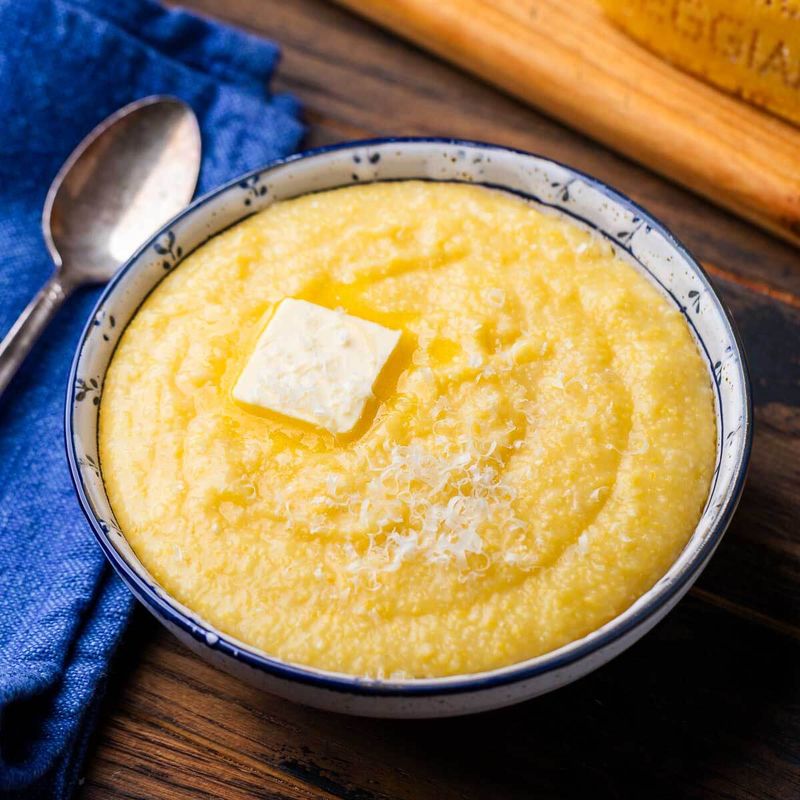
Polenta is a corn-based dish with a creamy texture, offering a comforting alternative to rice and pasta. It can be served soft or set and sliced, providing versatility in preparation. Rich in carbohydrates, polenta provides a steady energy source, crucial for active lifestyles. Its low glycemic index ensures gradual digestion, helping manage blood sugar levels. Top with sautéed mushrooms and herbs for a savory meal or pair with roasted vegetables for a wholesome side. Its comforting nature makes polenta a beloved staple in many cuisines.
18. Couscous
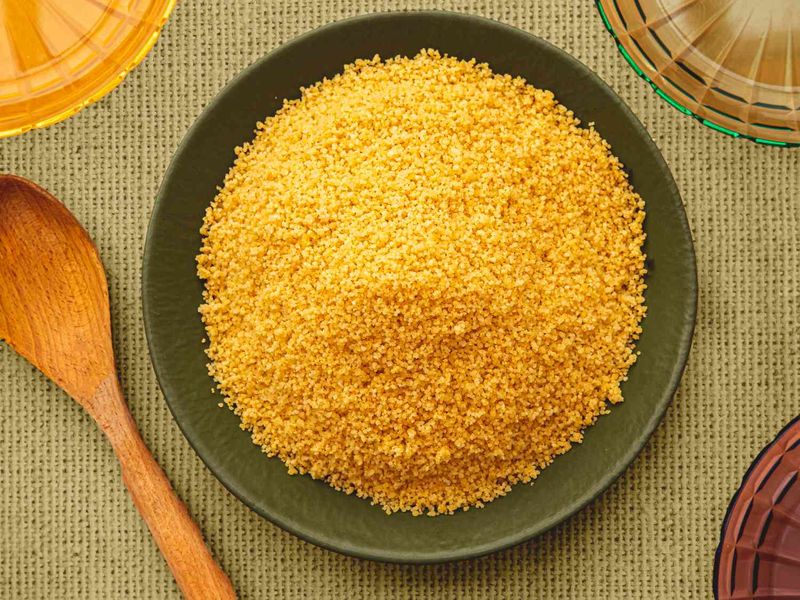
Couscous, though technically a pasta, offers a light and fluffy texture similar to rice. It’s quick to prepare and absorbs flavors well, making it a staple in Mediterranean cooking. While not whole grain, couscous can be part of a balanced diet when combined with high-fiber ingredients like vegetables and legumes. It’s an excellent base for salads and side dishes. Consider a couscous salad with fresh vegetables and herbs for a refreshing meal. Its versatility and ease of preparation make couscous a convenient choice.
19. Celeriac
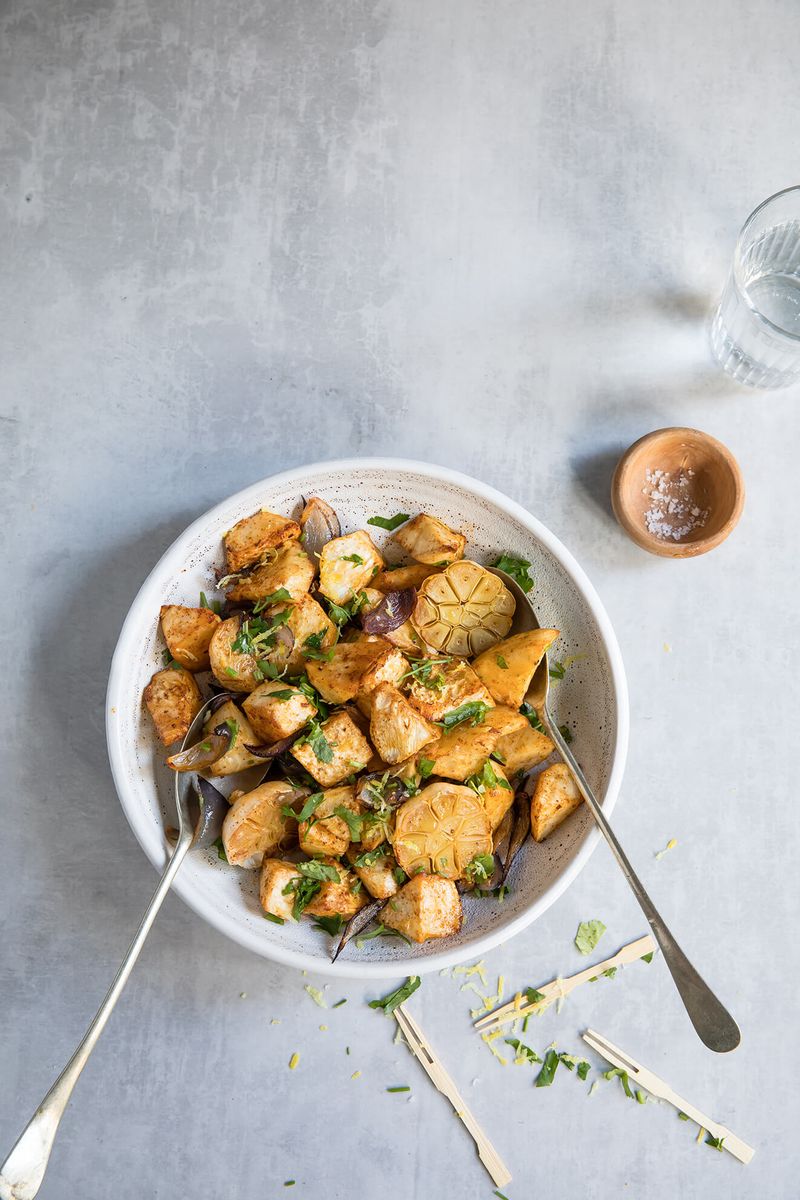
Celeriac, or celery root, offers a unique taste and creamy texture, making it a delightful mash alternative. Its subtle flavor pairs well with a variety of seasonings, enhancing both simple and complex dishes. Low in calories and rich in fiber, celeriac supports digestion and appetite control. It’s also a good source of vitamin K, promoting bone health. Try mashing celeriac with a touch of butter and herbs for a comforting side dish. Its distinctive flavor and nutritional benefits make it a valuable inclusion in a diabetes-friendly diet.
20. Quinoa Flakes
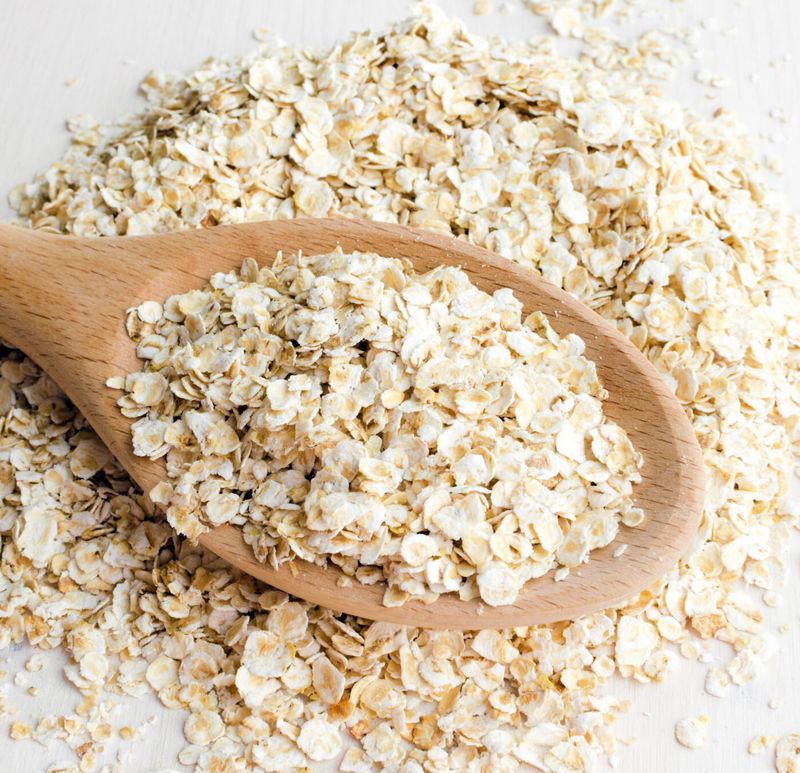
Quinoa flakes offer a quick-cooking alternative to traditional oatmeal, providing a nutritious breakfast option. Like whole quinoa, these flakes are rich in protein and essential amino acids. Their light texture and nutty flavor make them appealing in both sweet and savory dishes. Quinoa flakes cook in minutes, making them perfect for busy mornings. Top with fresh fruits, nuts, and a drizzle of honey for a wholesome breakfast. Their nutritional benefits and ease of preparation make quinoa flakes a beloved choice for health-conscious eaters.
